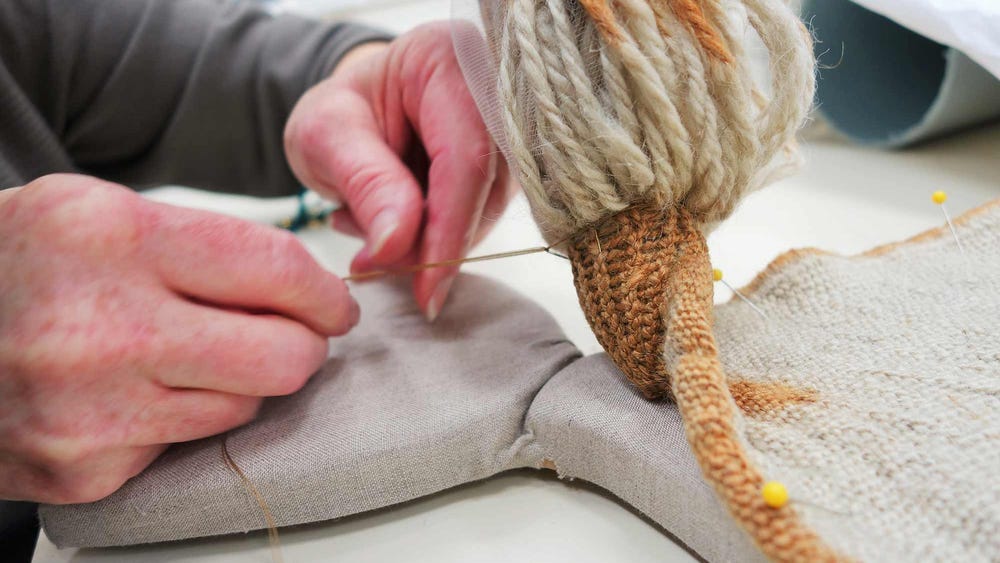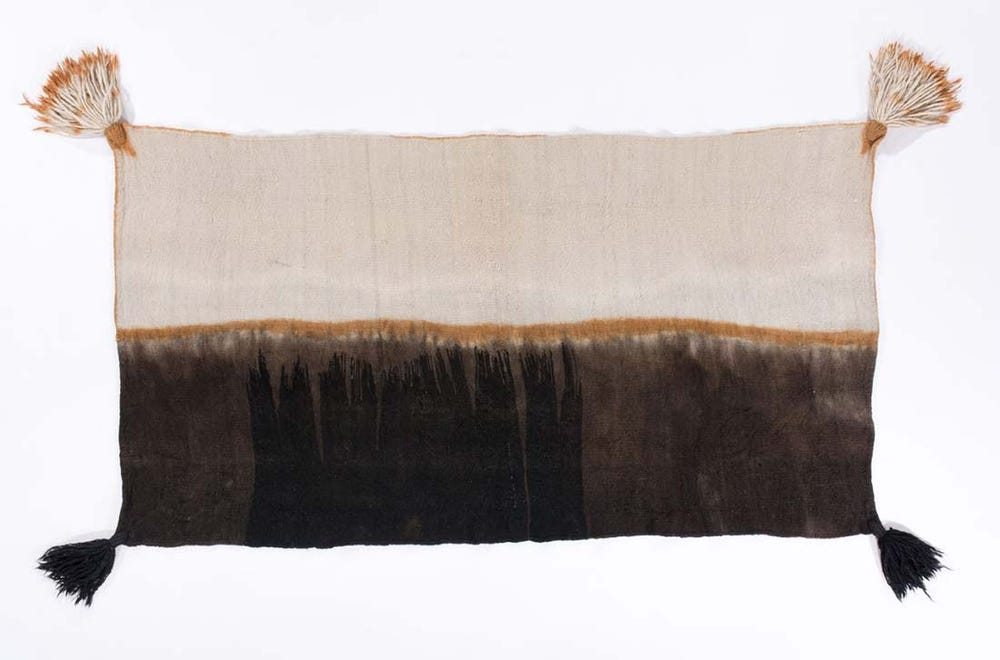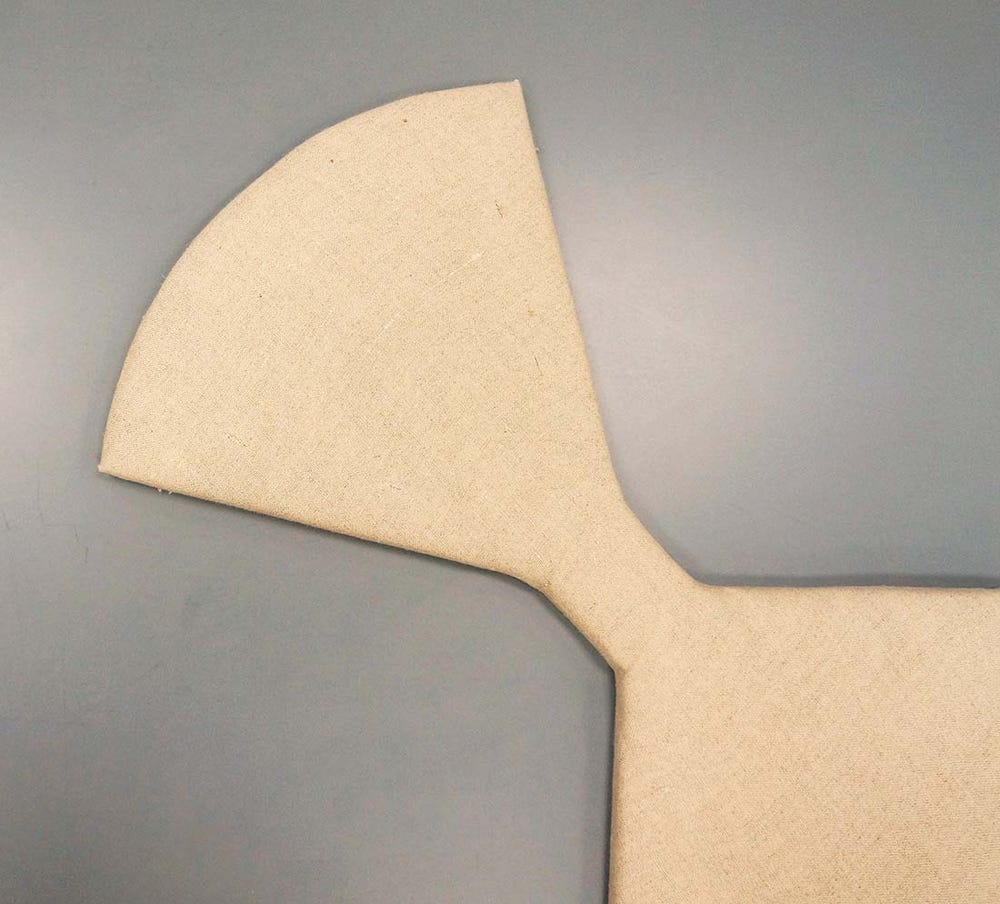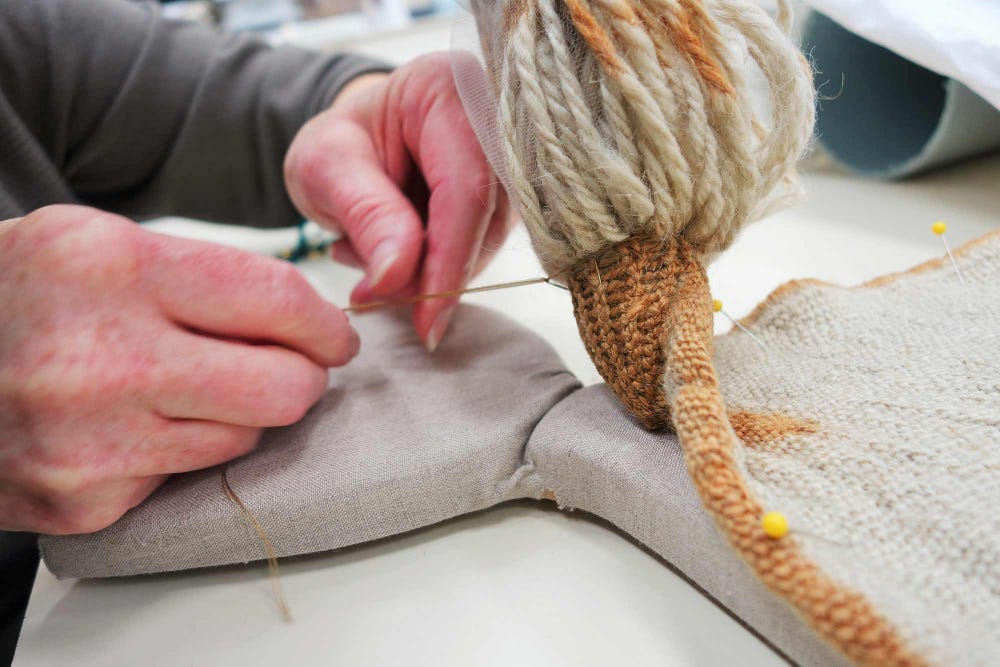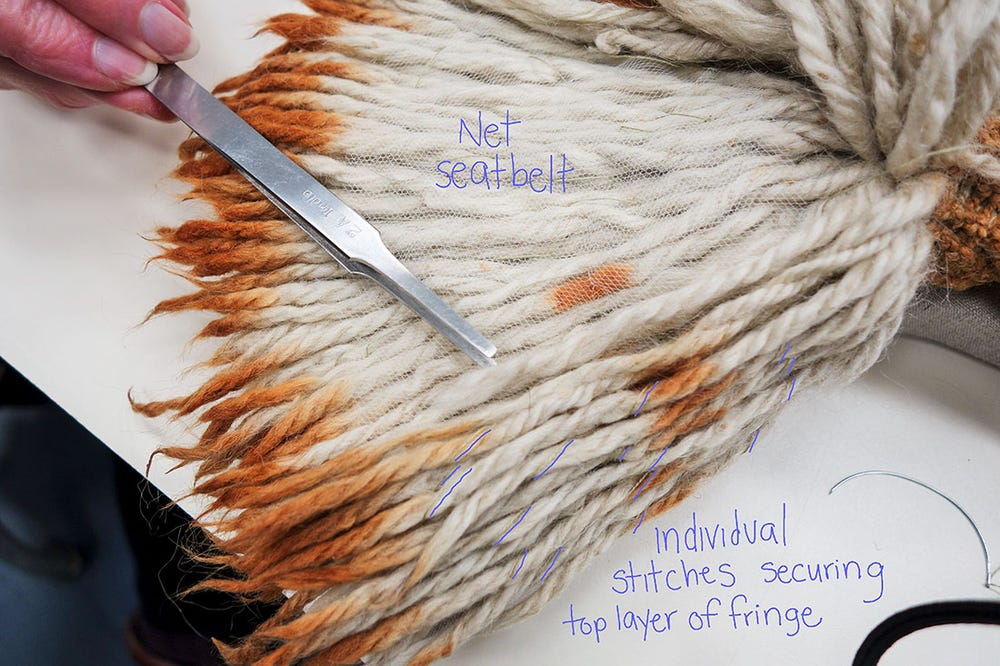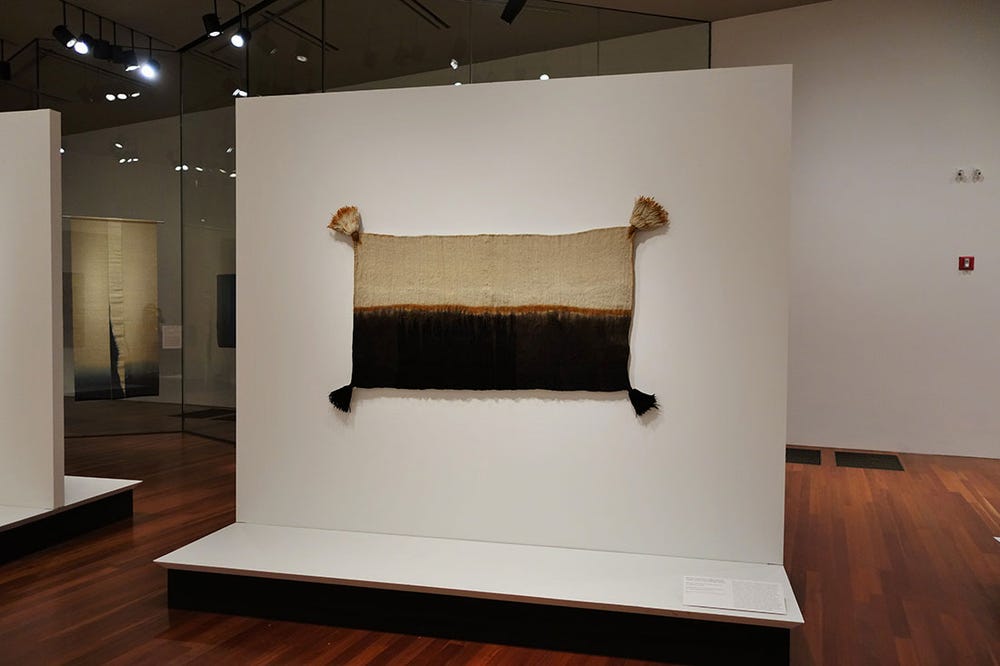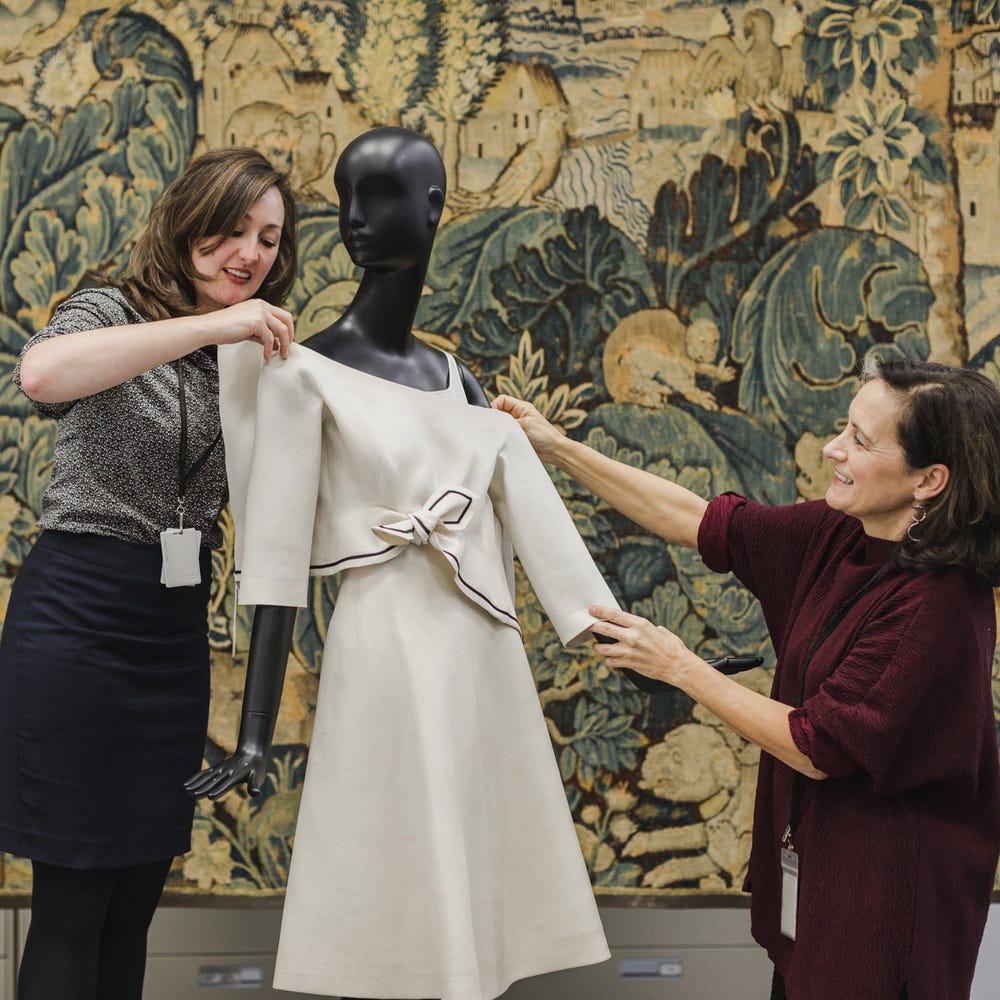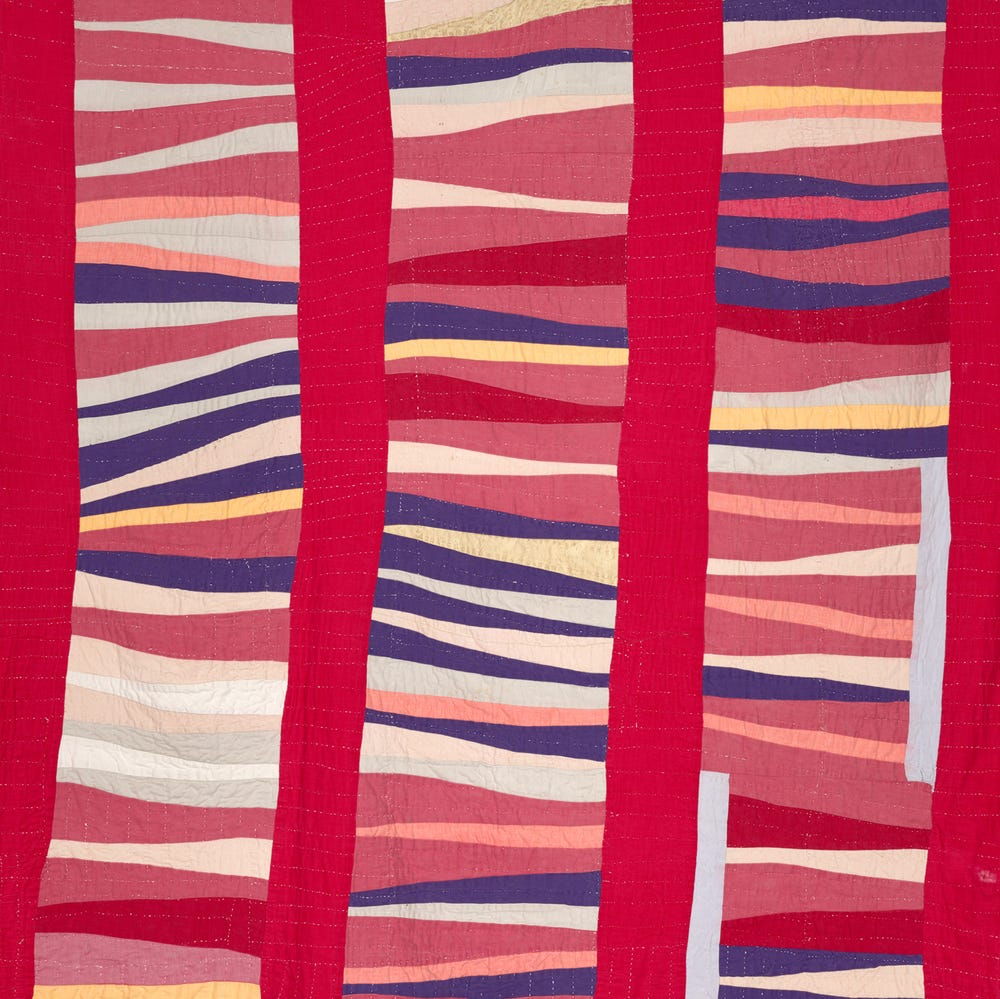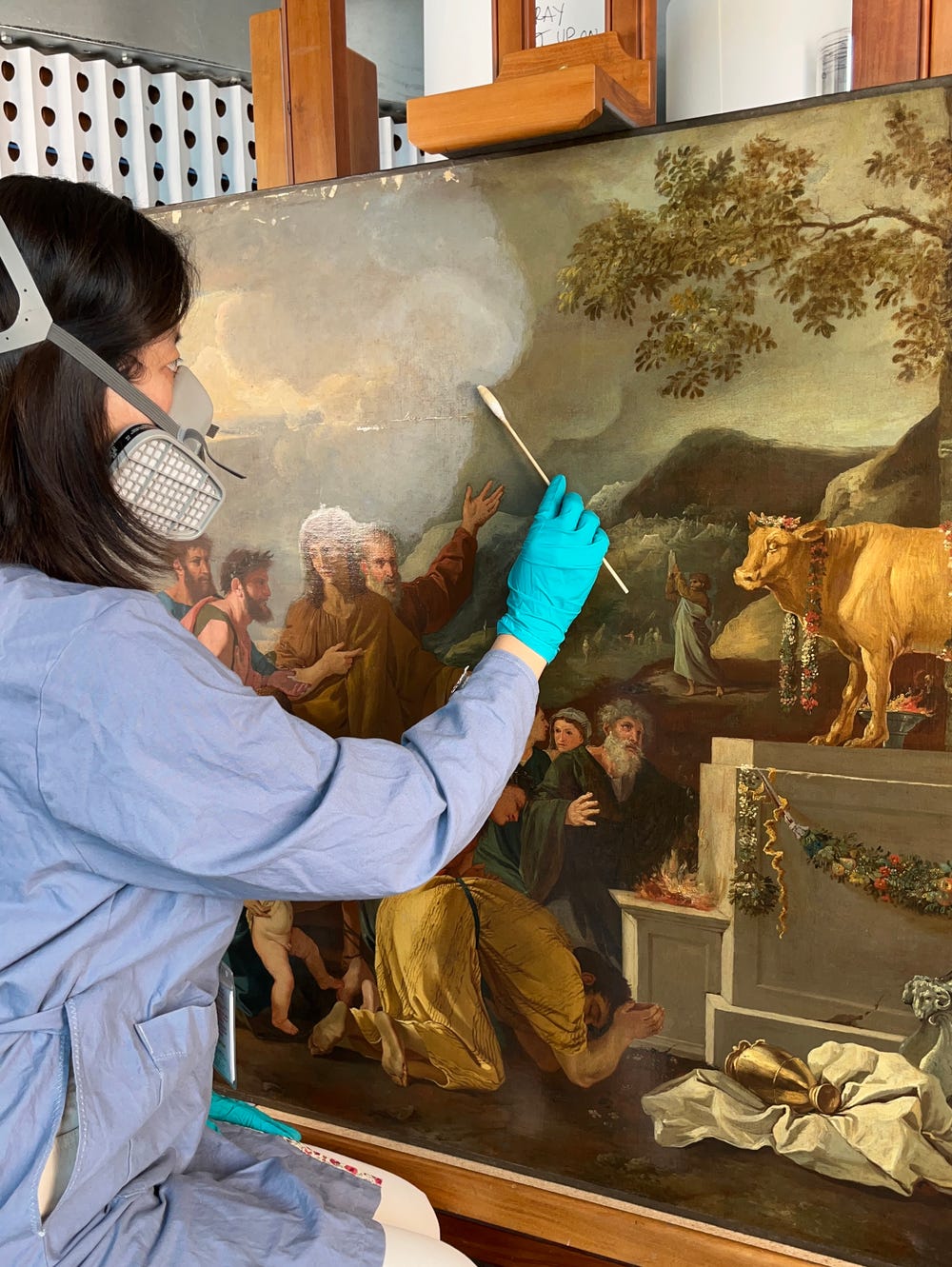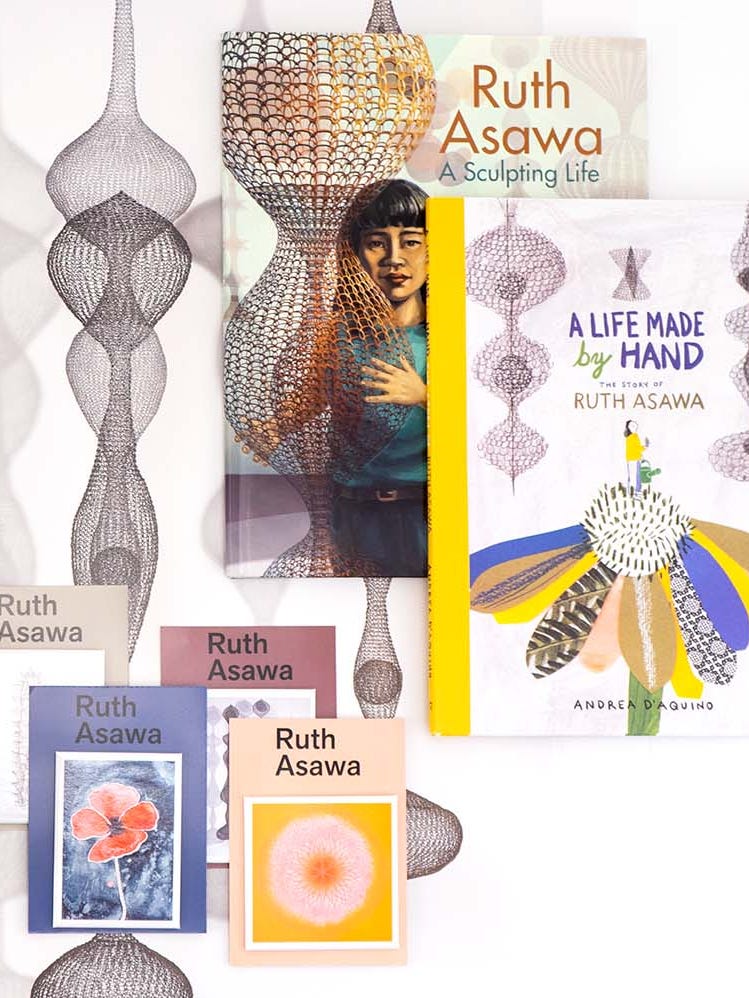The exhibition On the Grid: Textiles and Minimalism presented the textile conservation lab with a variety of mounting challenges. Among these challenges was determining the ideal way to display a dip-dyed and hand-painted Moroccan woman’s headcover, or adghar ibrdane tasslit, with a bulky tassel located at each of the four corners.
Woman's headcover (adghar ibrdane tasslit), early to mid 20th century Morocco. Anti-Atlas, Ait Abdellah people, 61 x 33 7/16 in. FAMSF, museum purchase, Textile Arts Council Endowment Fund
Often when displaying flat textiles, we secure them to large fabric-covered boards that support the entire object, allowing the board to be hung on the wall. With the headscarf, however, safely mounting the textile wasn’t this straightforward.
Detail of the mount’s upper left corner, shaped to follow the exact outline of the tassel. Photo by FAMSF
Our challenge was twofold: first, in keeping with the minimal aesthetic of the show, the exhibition designer asked that the fabric-covered mount not be visible, and second, because of gravity, the weighty top tassels had a tendency to flop over and obscure the face of the textile.
We decided to build a custom mount, following the exact outlines of the textile, including the tassels. This allowed us to safely support the entirety of the object, while also achieving a clean, minimal look by hiding the mount behind the object, making it essentially invisible.
Anchoring the base of the tassel to the fabric-covered support board. Photo by FAMSF
This left us with the problem of the tassels, especially the top two. How could we prevent them from flopping over while still supporting their considerable bulk?
First, each tassel was anchored to the mount around its base, to help support its weight. Then, the top layer of fringe was carefully folded out of the way, leaving the majority of the fringe exposed and in display position. This was secured to the mount using a wide net “seatbelt.”
Left: top view of net “seatbelt”, outlined in blue. Right: side view of net “seatbelt,” positioned to hold the bottom layers of fringe in place. Photo by FAMSF
Then, we put the the top layer of fringe back over the top of the net seatbelt and carefully tacked each strand of fringe in place, one by one. The thread had to be deliberately positioned around each strand so it didn’t pierce the object, as well as meticulously tensioned, so that it didn’t compress the strands. This would give the illusion of invisibility.
In-progress: positioning and carefully stitching each tassel from the top layer of fringe. Photo by FAMSF
It may seem counterintuitive, but achieving a clean, minimal display oftentimes takes more work, as was the case here. Each tassel took a total of 4-5 hours to support, time well spent to achieve both safe and invisible support, allowing them to defy gravity for the duration of the show.
Installation view, with gravity-defiant tassels. Photo by FAMSF
